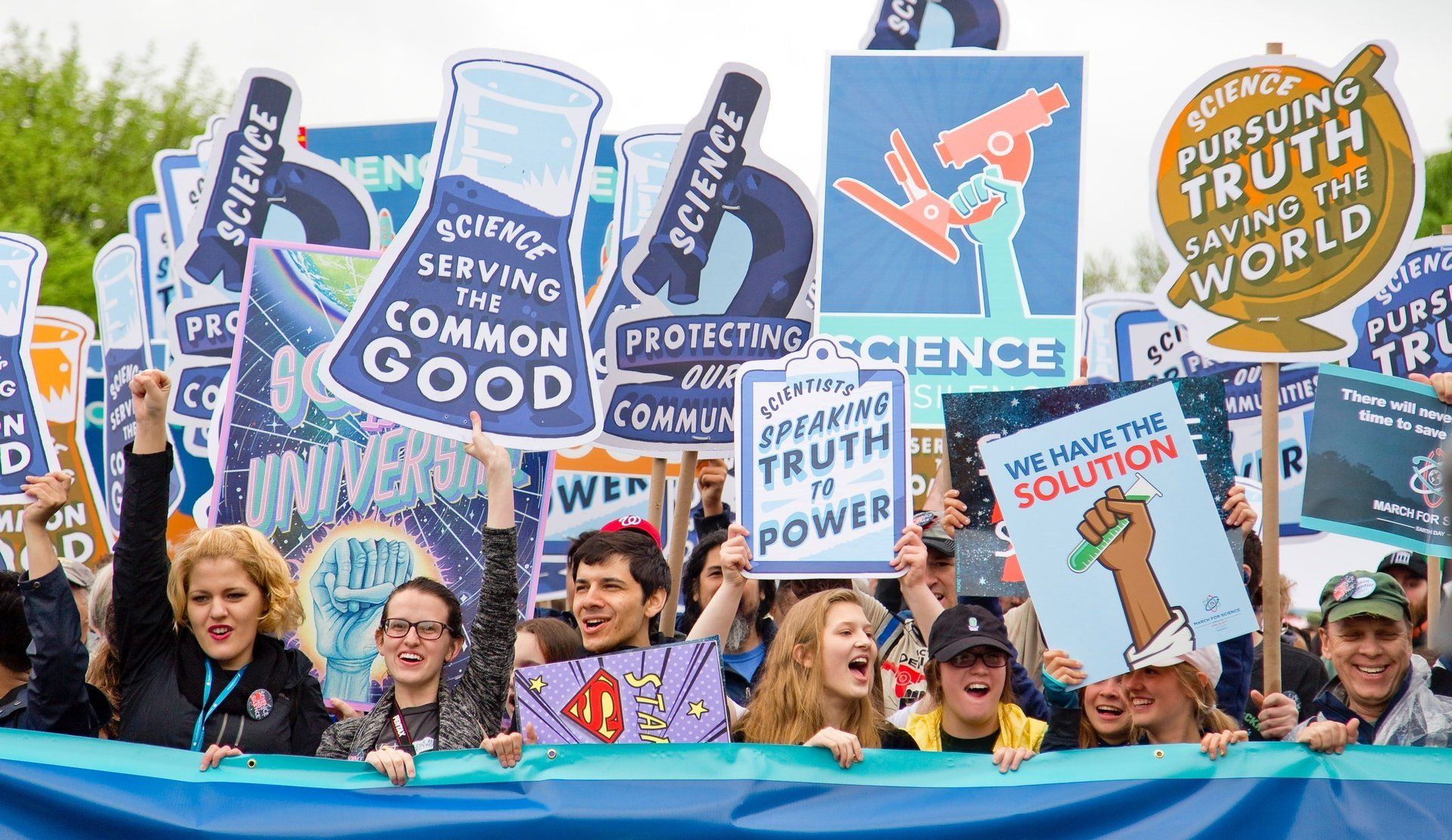EcoPerspectives Blog
By Kenny Bozarth
In its most recent review, the EPA concluded that Roundup is safe if used as directed. [1] Further, the EPA found that there are no risks to children who play in residential areas treated with Roundup. [2] The EPA states there is no evidence that glyphosate-based weed-killers cause cancer by considering a “significantly more extensive and relevant dataset than the International Agency on the Research for Cancer.” [3] This conclusion differs with that of California’s Proposition 65 and that of the World Health Organization. [4] California’s Proposition 65 recommended that Roundup be labeled to warn consumers of a possible cancer risk when using the product. [5]
The EPA is tasked with approving pesticides for use under FIFRA. [6] Under FIFRA, a pesticide may be registered if the pesticide does not result in “unreasonable adverse effects on the environment.” [7] The pesticide must not cause any “unreasonable risk to man or the environment, taking into account the economic, social, and environmental costs and benefits of the use of any pesticide.” [8] Further, a pesticide must be registered in the United States for it to be sold. [9] The EPA utilizes a cost-benefit analysis. [10] The EPA weighs the risks of using the pesticide against the benefits of using the pesticide. [11] If a pesticide’s benefits outweigh its risks, the EPA may approve registration. [12] As part of this registration process, the EPA reviews pesticide labels. [13] And, a pesticide is considered misbranded if “its labeling bears any statement, design, or graphic design relative thereto or to its ingredients which is false or misleading in any particular.” [14] The EPA reviews registered pesticides at least every 15 years. [15]
Proposition 65 relies on various organizations, committees, and experts when making warning label decisions including the Carcinogen Identification Committee, the Developmental and Reproductive Toxicant Committee, and other authoritative bodies. [16] The CIC and DARTIC are independent committees of expert scientists that meet at least once a year. [17] California’s Proposition 65 tends to take a careful approach while the EPA has tended to tailor its decisions to satisfy pesticide manufacturers and political parties. [18] A study performed by the Union of Concerned Scientists found that close to 70 percent of scientists working with regulations under the EPA reported at least one occurrence of political interference. [19] Also, 553 scientists explained that the EPA rarely utilizes advice from independent scientific advisory committees. [20]
Further, the EPA uses “the best scientific and commercial data available” to make warning label decisions. [21] The EPA has significant discretion to decide what the best data is. [22] California’s Proposition 65 places warning labels on products if “it has been clearly shown through scientifically valid testing according to generally accepted principles to cause cancer or reproductive toxicity.” [23] Through use of independent research and a careful approach, California’s Proposition 65 is more effective in protecting consumers than the EPA is under FIFRA, but Proposition 65 must overcome a major hurdle before reaching its full potential. [24]
California uses a wealth of independent studies during its warning label process, but a major problem remains. [25] Before August 2018, if Proposition 65 found that a pesticide or other product caused cancer, the final warning label placed on the product did not have to explain the specific ingredient or ingredients in the product that caused cancer. [26] The warning label only stated that the product may cause cancer. [27] While this creates transparency for the consumer by allowing them to weigh the benefits and the risks of consuming a product, the consumer must research every ingredient listed on the product. This creates an overly burdensome process.
Thus, California adopted new rules in August 2016 which became active in August 2018. [28] The new rules state that a product must “name at least one chemical that prompted the warning,” list the internet address for the Proposition 65 warning website, and contain a yellow triangle to serve as a warning signal. [29] These amendments provide the consumer with more information, but they do not go far enough. [30] Not everyone is able to access online information, and listing a link on products may not be effective for these consumers. [31] Some may purchase a product on a quick lunch break and may not have time to visit a link to research 900 chemicals before consumption or use. [32] The only way to be transparent with a consumer is to list every potentially cancerous ingredient or chemical directly on the product.
Regarding Proposition 65’s new requirement of listing at least one specific cancer-causing ingredient, “That single disclosure protects a company from lawsuits relating to any additional toxic chemicals contained in the product.” [33] But, listing one potentially harmful chemical and leaving it up to the consumer to find the rest is like giving someone a head start in an Easter egg hunt. The companies are basically saying, “I’ll help you find the first one, but the rest is on you.” Before California’s Proposition 65 can reach its full potential, further amendments need to be made. However, the new 2018 amendments are a step in the right direction.
California’s Proposition 65 takes a careful approach when deciding to place a warning label on a product. It only makes sense for the law to apply this approach to warning label language requirements. The simple answer is to list every chemical and ingredient that has a correlation to cancer or other health effects directly on the product and hope other states and the EPA follow suit. Only then will companies truly be transparent with the consumer. This transparency is especially important when consumers are handling pesticides. Full transparency will give the consumer the information they need to protect themselves and those around them. Armed with this information, parents may think twice about letting their kid play on a chemically laden lawn.
[1] https://www.reuters.com/article/us-bayer-glyphosate-lawsuit-appeals-anal/bayer-bets-on-silver-bullet-defense-in-roundup-litigation-experts-see-hurdles-idUSKCN1SM2R3
[2] https://www.epa.gov/ingredients-used-pesticide-products/glyphosate
[3] https://www.epa.gov/ingredients-used-pesticide-products/glyphosate
[4] https://www.usnews.com/news/national-news/articles/2019-08-08/epa-wont-approve-labels-that-say-roundup-weed-killer-chemical-glyphosate-causes-cancer
[5] https://www.usnews.com/news/national-news/articles/2019-08-08/epa-wont-approve-labels-that-say-roundup-weed-killer-chemical-glyphosate-causes-cancer
[6] Mary Jane Angelo, The Killing Fields: Reducing the Casualties in the Battle Between U.S. Species Protection Law and U.S. Pesticide Law , 32 Harv. Envtl. L. Rev. 95, 95 (2008).
[7] Id. at 105.
[8] Id.
[9] Id. at 104-105.
[10] Id. at 105.
[11] Id.
[12] Mary Jane Angelo, Embracing Uncertainty, Complexity, and Change: An Eco-pragmatic Reinvention of a First-Generation Environmental Law , 33 Ecology L.Q. 105, 132 (2006).
[13] https://www.epa.gov/pesticide-registration/labeling-requirements
[14] Linda J. Fisher et. al., A Practitioner’s Guide to the Federal Insecticide, Fungicide, and Rodenticide Act: Part I , 24 ELR 10449, 10459 (1994).
[15] https://www.epa.gov/pesticide-reevaluation/registration-review-schedules
[16] https://oehha.ca.gov/proposition-65/how-chemicals-are-added-proposition-65-list
[17] https://oehha.ca.gov/proposition-65/how-chemicals-are-added-proposition-65-list
[18] https://www.sciencemag.org/news/2019/05/health-experts-wary-epa-rush-revise-carcinogen-testing ; https://oehha.ca.gov/proposition-65/how-chemicals-are-added-proposition-65-list
[19] https://www.ucsusa.org/sites/default/files/legacy/assets/documents/scientific_integrity/interference-at-the-epa.pdf
[20] https://www.ucsusa.org/sites/default/files/legacy/assets/documents/scientific_integrity/interference-at-the-epa.pdf
[21] 16 U.S.C.A. § 1536 (West).
[22] 16 U.S.C.A. § 1536 (West).
[23] Cal. Health & Safety Code § 25249.8 (West).
[24] https://oehha.ca.gov/proposition-65/how-chemicals-are-added-proposition-65-list
[25] https://oehha.ca.gov/proposition-65/how-chemicals-are-added-proposition-65-list
[26] https://www.p65warnings.ca.gov/new-proposition-65-warnings
[27] https://www.p65warnings.ca.gov/new-proposition-65-warnings
[28] https://www.p65warnings.ca.gov/new-proposition-65-warnings
[29] https://www.p65warnings.ca.gov/new-proposition-65-warnings
[30] https://www.p65warnings.ca.gov/new-proposition-65-warnings
[31] https://www.p65warnings.ca.gov/new-proposition-65-warnings
[32] https://www.p65warnings.ca.gov/new-proposition-65-warnings
[33] https://www.casualliving.com/web-exclusive/playing-rules-what-need-know-about-prop65-furniture/
The post Pesticide Warning Labels: We Need Transparency appeared first on Vermont Journal of Environmental Law.








 meeting. This session is called
meeting. This session is called  aris Agreement
aris Agreement rsaw International Mechanism on Loss and Damage
rsaw International Mechanism on Loss and Damage
 pear to be more consistent with stewardship, not domination.
pear to be more consistent with stewardship, not domination. riate measure on its own. It is the fairness of price that is important. A fair price captures the cost of raising a healthy animal. A cheap price implicitly captures the low cost of raising an animal, not necessarily healthy and not net necessarily of nutritious value. The animal is produced like a piece of equipment on an assembly line, fattened with hormones, injected with antibiotics, living in and eating its own feces, with limited development physically and mentally; cheaply treated, cheaply priced, it offers minimal consumption benefit. The flesh that composed the animal, the same meager nutrition and development embedded in the animal will be the fuel source for the consumer. The cheapness in its price imposes yet another adversity: that life can be thrown awaytrashedbased on market-promoted price elasticity. Further from an ecological perspective, the concentrated living conditions of these voiceless, captive living commodities adversely impacts groundwater and, depending how feces are discarded, can create further human health impacts.
riate measure on its own. It is the fairness of price that is important. A fair price captures the cost of raising a healthy animal. A cheap price implicitly captures the low cost of raising an animal, not necessarily healthy and not net necessarily of nutritious value. The animal is produced like a piece of equipment on an assembly line, fattened with hormones, injected with antibiotics, living in and eating its own feces, with limited development physically and mentally; cheaply treated, cheaply priced, it offers minimal consumption benefit. The flesh that composed the animal, the same meager nutrition and development embedded in the animal will be the fuel source for the consumer. The cheapness in its price imposes yet another adversity: that life can be thrown awaytrashedbased on market-promoted price elasticity. Further from an ecological perspective, the concentrated living conditions of these voiceless, captive living commodities adversely impacts groundwater and, depending how feces are discarded, can create further human health impacts. Madhavi Venkatesan is a faculty member in the Department of Economics at Bridgewater State University, where her present academic interests are specific to the integration of sustainability into the economics curriculum. Prior to re-entering academics, Madhavi held senior level positions in investor relations for three Fortune 250 companies. In this capacity she was a key point of contact for investors and stakeholders and was singularly instrumental in the development of socially responsible investing strategies and corporate social responsibility reporting. Madhavi started her financial services career after completing her post-doctoral fellowship at Washington University in St. Louis. She has a PhD, M.A. and B.A. in Economics from Vanderbilt University and a Masters of Environmental Management from Harvard University. She is presently a Masters of Environmental Law and Policy candidate at Vermont Law School.
Madhavi Venkatesan is a faculty member in the Department of Economics at Bridgewater State University, where her present academic interests are specific to the integration of sustainability into the economics curriculum. Prior to re-entering academics, Madhavi held senior level positions in investor relations for three Fortune 250 companies. In this capacity she was a key point of contact for investors and stakeholders and was singularly instrumental in the development of socially responsible investing strategies and corporate social responsibility reporting. Madhavi started her financial services career after completing her post-doctoral fellowship at Washington University in St. Louis. She has a PhD, M.A. and B.A. in Economics from Vanderbilt University and a Masters of Environmental Management from Harvard University. She is presently a Masters of Environmental Law and Policy candidate at Vermont Law School.

 Professor Mark Latham, deputy vice dean for academic affairs, joined the Vermont Law School faculty in 2005. He specializes in a range of environmental issues that arise in corporate and commercial real estate transactions and brownfields redevelopment. His research focus includes the intersection of business and environmental law, and also issues under the federal Clean Water Act.
Professor Mark Latham, deputy vice dean for academic affairs, joined the Vermont Law School faculty in 2005. He specializes in a range of environmental issues that arise in corporate and commercial real estate transactions and brownfields redevelopment. His research focus includes the intersection of business and environmental law, and also issues under the federal Clean Water Act.